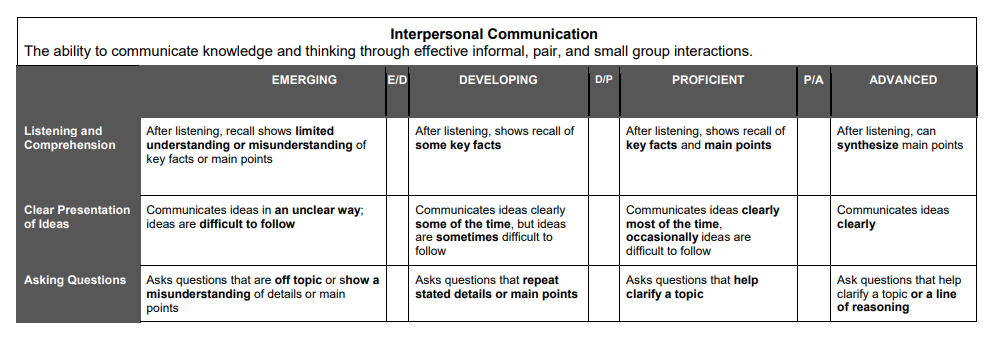You know, it used to be that to have a polite conversation, we just had to follow the advice of Henry Higgins in My Fair Lady, “Stick to the weather and to your health.” But with climate change and anti-vaxxing, those subjects are not safe either. —Celeste Headlee (TedXCreativeCoast)
I don’t know about you, but I agree with Headlee.
There is hardly a topic that has not become contentious and we only have to look at social media outlets to see the clear evidence.
Common core standards and other states who’ve created their own, all include speaking and listening standards. If it’s important in life, and certainly listening and speaking are essential parts of a literate identity, then we should be teaching, modeling and providing plenty of practice in the classroom.
I recently had the opportunity to speak to a group of English Language Arts coordinators from districts across the North Texas area. One of the things I hoped to emphasize in that morning session was the responsibility and privilege we have as educators to intentionally include discussion opportunities throughout the school day.
For kids.
Not for us. So many teachers fill up the minutes and hours of the school day with one voice. Their own.
Kids should be talking and listening. And this should be an everyday practice in their classroom. When I coach on campuses, I often tell teachers, “The thought processes that build comprehension are invisible. There are only a couple of ways that I can see a student’s comprehension of text and that’s when they speak or write.”
I created a sixth grade unit to share with the MetroCrest group when I spoke to them in early November. When planning a unit, I always start with standards. Our state standards in regard to response skills:
“…reading, listening, speaking, writing, and thinking using multiple texts. Students should respond to an increasingly challenging variety of sources that are read, heard, or viewed. Students should participate in student-led discussions by eliciting and considering suggestions from other group members, taking notes, and identifying points of agreement and disagreement.”
This unit started with a short CNN news story about a woman from Guatemala who was one of many in the migrant caravan from Central America. She spoke through a translator about her reason for leaving home, taking her three children, and joining the thousands that made the journey. We set a purpose for viewing and then students began a written conversation shared by Harvey Daniels and Elaine Daniels.


This strategy allows students to write first in preparation for the follow-up discussion. Teachers don’t often like to “waste time” on literacy practices like this because they worry they won’t be able to grade the assignment. Recently, an educator friend shared an oral communication rubric from New Tech Network that is an excellent tool for assessing (and providing feedback) for student discussions. An example of the 5th grade rubric (which would easily work for 6th graders):

The following day students read Warsan Shire’s hauntingly beautiful poem, Home.

Again, students are to discuss, but this time they’ve been provided with sentence starters if they need them. Notice that students will be listening closely enough to their discussion group members so they capture others’ thoughts.

There were several more text selections that students read in this two-week unit. Each time there are planned discussions so that the teacher has opportunity to listen in, model civil discourse, guide students as they navigate disagreements and formulate thoughts; learning all the while to listen closely to their classmates.
Are you able yet to see the power of mentoring kids in the art of discussion as they read increasingly more challenging texts? As educators, we have the responsibility and the privilege of designing units that provide opportunities for kids to grow this critical part of their literate lives.
I want to leave you with a short excerpt from Penny Kittle and Kelly Gallagher’s book, 180 Days: Two Teachers and the Quest to Engage and Empower Adolescents.
Learning is social. Talk deepens thinking and learning. Yes, there are moments when we seek deep, reflective silence in our classrooms, but these moments are balanced by the frequent buzz that occurs when students share interesting thinking with each other. As Dennie Palmer Wolf (2015) writes, “Listening and speaking have to come back into the heart of the curriculum, out from under the dominance of reading and writing. For inquiry to flourish, young people have to grow up in discussions, public speaking, interviewing, debating, and spoken word and oral performance” We agree and so we work to place talk in the center of our classrooms
And so should we–
Elevate speaking and listening as priorities of a literate life.










